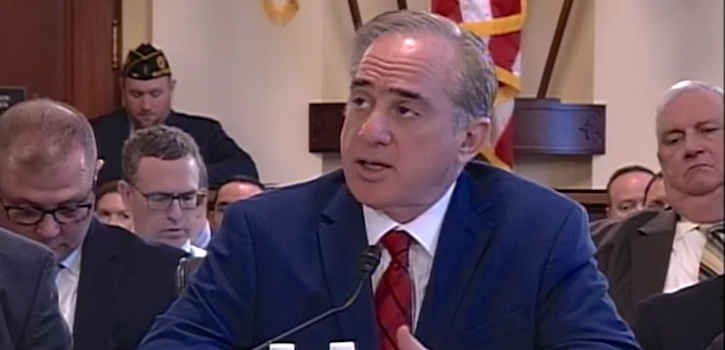VA Secretary Says Agency Must Replace "130" Different EHR Systems
The contract with Cerner is again expected to be finalized soon, but the agency head stressed the complexity of the project.

The long-planned electronic health records (EHR) modernization contract between Cerner and the Department of Veterans Affairs (VA) has yet to materialize, held up at last check by an assessment from the MITRE Corporation. The assessment reportedly went well, and the contract is again expected to be finalized by the end of the month.
In a recent House of Representatives Committee on Veterans Affairs hearing, however, members of Congress continued to express doubts about the VA’s capacity to complete the work on time and within budget.
Secretary David Shulkin, MD, fresh off a tumultuous week of scrutiny over his summer travel, was on hand to explain how VA plans to transition from its legacy VistA system to the Cerner platform. He faced pointed criticism from Committee Chairman Phil Roe (R-TN), who noted the projected cost of the program as an area of concern.
After visiting an Air Force base in Washington State, the region where the VA is attempting to initiate the transition, Roe said that he was “not even sure you can ever turn VistA off.”
Shulkin aimed to defend the planned 10-year, $10 billion changeover by pointing out that the broader US healthcare system still faced serious interoperability challenges, and by highlighting the particular state of interoperability within his agency.
“Everyone thinks VA has an electronic health record today, Vista,” he said. “We don't. We have 130 electronic health records, 130 different parts of Vista. This will bring us to a single electronic health record within VA.”
That’s why, Shulkin said, the transition will take a decade. He added that some version of VistA will remain in place until every single VA facility has made the transition successfully. The $10 billion price tag reportedly doesn’t cover the cost of updating infrastructure to facilitate the new software, nor does it cover the cost of maintaining VistA systems until they are finally replaced. To ensure accountability, Congress will create a s unique account to contain the funding it appropriates for the project.
“It's about technology, but only a little bit,” Shulkin said. “This is about how you do business.” Given the VA’s business history, however, that comment likely did little to assuage congressional concerns.
“It’s unthinkable that VA could potentially spend billions of dollars on a project that doesn’t substantially increase the department’s ability to share information with the Department of Defense or community providers,” Roe said. “But that’s exactly what could happen if VA fails to proceed in a careful deliberate manner.”
Related Coverage:
Budget Slates $1B for VA-Cerner Deal as Uncertainty Mounts
GAO Details Failed VA EHR Initiatives as Agency Requests New Interoperability Rule
Healthy Bottom Line: The Trouble With SDOH Programs and the Secret to Improving Them
September 28th 2021Several problems exist with current programs that address social determinants of health (SDOH); however, a new social model aims to combat these issues and improve the programs’ effectiveness.